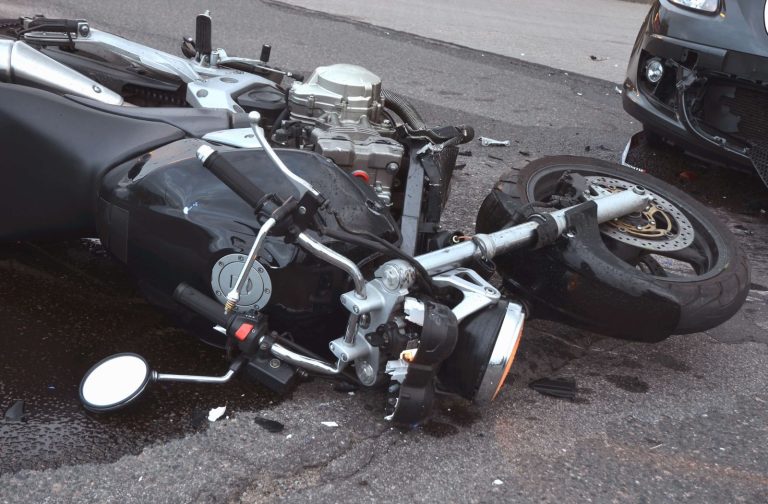I. Introduction: Examining the Causes of Motorcycle Crashes

A. Recognizing the Significance of Studying Motorcycle Crash Causes
- Understanding the Importance of Identifying Factors Contributing to Motorcycle Crashes
Studying the causes of motorcycle crashes is crucial for understanding the factors that contribute to these accidents. By identifying these causes, we can develop effective strategies and interventions to prevent motorcycle accidents and reduce the associated risks. - Embracing the Need for Effective Strategies to Prevent Motorcycle Accidents
Motorcycle accidents can result in severe injuries and fatalities. It is vital to develop and implement strategies that target the causes of these accidents to enhance road safety for motorcyclists and other road users.
B. Unveiling the Key Factors and Considerations for Motorcycle Crash Analysis
- Exploring Common Causes and Contributing Factors in Motorcycle Crashes
Motorcycle crashes can be caused by various factors, including human error, environmental conditions, vehicle-related issues, and road infrastructure. Analyzing these causes helps in understanding the dynamics of motorcycle accidents and formulating effective prevention strategies. - Gaining Insights into the Importance of Education and Awareness for Motorcyclists and Drivers
Education and awareness play a crucial role in preventing motorcycle crashes. Promoting safety education for both motorcyclists and other road users raises awareness about the unique challenges faced by motorcyclists and encourages responsible behaviors on the road.
II. Human Factors in Motorcycle Crashes

A. Rider Error and Inexperience
- Assessing the Impact of Rider Inexperience and Lack of Skills on Motorcycle Crashes
Inexperience and lack of skills can significantly contribute to motorcycle crashes. Riders who lack proper training or have limited riding experience may struggle to control their motorcycles, misjudge hazards, or make errors in critical situations. - Exploring the Importance of Proper Training and Licensing for Motorcycle Riders
Proper training and licensing are essential for enhancing rider competence and reducing the risk of motorcycle crashes. Comprehensive training programs and licensing requirements ensure that riders have the necessary skills, knowledge, and understanding of road safety principles.
B. Impaired Riding and Distracted Driving
- Understanding the Influence of Alcohol, Drugs, and Distractions on Motorcycle Crashes
- Impaired riding, including riding under the influence of alcohol or drugs, significantly increases the risk of motorcycle accidents. Similarly, distractions, such as using mobile devices while riding, divert attention from the road, and impair riders’ ability to react to potential hazards.
- Evaluating the Need for Responsible Riding and Eliminating Distractions on the Road
Promoting responsible riding practices, including abstaining from alcohol or drugs while riding, is crucial for preventing motorcycle crashes. Additionally, eliminating distractions and focusing solely on the task of riding can help ensure the safety of motorcyclists and other road users.
III. Environmental Factors in Motorcycle Crashes

A. Road Conditions and Hazards
- Assessing the Role of Poor Road Conditions and Hazards in Motorcycle Crashes Poor road conditions, such as potholes, loose gravel, or uneven surfaces, can significantly contribute to motorcycle crashes. These conditions can cause loss of control, skidding, or sudden changes in direction, leading to accidents. Identifying and avoiding road hazards is crucial for motorcyclists to ensure their safety on the road.
- Exploring Strategies for Identifying and Avoiding Road Hazards to Ensure Safety Motorcyclists can employ strategies to identify and avoid road hazards. This includes scanning the road ahead for potential dangers, maintaining a safe distance from other vehicles, adjusting speed when approaching hazardous areas, and using defensive riding techniques to navigate through challenging road conditions. Staying alert and anticipating potential hazards can help prevent accidents.
B. Weather Conditions and Visibility
- Understanding the Impact of Inclement Weather and Reduced Visibility on Motorcycle Crashes Adverse weather conditions, such as rain, fog, or snow, pose significant challenges to motorcyclists. Reduced visibility and slippery road surfaces increase the risk of crashes. Wet or icy roads can lead to skidding, while poor visibility can make it difficult for other drivers to spot motorcycles. Understanding the impact of weather conditions is crucial for riders to adjust their driving behavior accordingly.
- Evaluating Safety Measures and Riding Techniques for Adverse Weather Conditions Motorcyclists should adopt specific safety measures and riding techniques when facing adverse weather conditions. This includes reducing speed, maintaining a safe distance from other vehicles, using appropriate clothing and gear for protection, and using headlights and reflective materials to enhance visibility. Additionally, riders should be aware of specific techniques for navigating through wet or icy surfaces to minimize the risk of accidents.
IV. Vehicle Factors in Motorcycle Crashes
A. Mechanical Failures and Defects
- Assessing the Influence of Mechanical Failures and Defects on Motorcycle Crashes Mechanical failures and defects in motorcycles can lead to accidents. Issues with brakes, tires, suspension, or electrical systems can result in loss of control or equipment malfunction. Regular maintenance, routine inspections, and addressing any identified issues promptly are crucial to ensuring the safety and reliability of motorcycles.
- Exploring the Importance of Regular Maintenance and Quality Assurance for Motorcycle Safety Regular maintenance, including checking tire pressure, inspecting brake systems, and ensuring proper functioning of lights and signals, is essential for motorcycle safety. Motorcyclists should follow manufacturer recommendations and seek professional servicing when necessary. Quality assurance in production and adherence to safety standards also play a significant role in preventing accidents related to mechanical failures or defects.
B. Vehicle Interactions and Collision Risks
- Understanding the Risks Associated with Interactions between Motorcycles and Other Vehicles Motorcycles are more vulnerable to collisions with other vehicles due to their smaller size and lower visibility. Other drivers may fail to notice motorcycles or misjudge their speed and distance, leading to dangerous situations. Being aware of these risks and practicing defensive riding techniques can help motorcyclists minimize the chances of collisions.
- Evaluating Strategies for Defensive Riding and Anticipating Potential Collisions Defensive riding techniques are crucial for motorcyclists to anticipate and respond to potential collisions. This includes maintaining a safe following distance, using mirrors to monitor surrounding vehicles, signaling intentions clearly, and constantly scanning the road for potential hazards. Motorcyclists should also be prepared to take evasive action when necessary and make themselves as visible as possible to other drivers.
V. Legislative and Infrastructure Factors
A. Helmet Laws and Protective Gear Requirements
- Assessing the Impact of Helmet Laws and Protective Gear Regulations on Motorcycle Crashes Mandatory helmet laws and regulations on the use of protective gear have a significant impact on reducing the severity of injuries in motorcycle crashes. Helmet use has been shown to reduce the risk of head injuries and fatalities. Compliance with these laws and regulations is vital to ensure the safety and well-being of motorcyclists.
- Exploring the Importance of Compliance with Safety Regulations for Enhanced Rider Protection Compliance with safety regulations, including wearing helmets and other protective gear, is crucial for motorcyclists to enhance their protection. Properly fitting helmets, sturdy jackets, gloves, boots, and reflective clothing all contribute to reducing the risk of severe injuries. Adhering to safety regulations is a responsibility shared by both riders and enforcement agencies.
B. Roadway Design and Safety Measures
- Understanding the Role of Proper Roadway Design and Safety Measures in Preventing Motorcycle Crashes Well-designed roadways that consider the specific needs of motorcyclists can significantly reduce the risk of crashes. Factors such as appropriate lane widths, clear signage, adequate lighting, and well-maintained road surfaces contribute to safe riding conditions. Incorporating safety measures like rumble strips and proper lane markings can also enhance motorcycle safety.
- Evaluating the Need for Infrastructure Improvements and Safety Enhancements for Motorcyclists Continued efforts to improve infrastructure for motorcyclists are necessary to prevent crashes. This includes the addition of dedicated motorcycle lanes or designated riding areas, installing motorcycle-specific safety features like barriers or crash attenuators, and enhancing road signage to increase awareness and visibility. Collaboration between transportation authorities, planners, and motorcyclist organizations is crucial for implementing these improvements.
Understanding the causes of motorcycle crashes is crucial to develop effective prevention strategies and improve rider safety. This comprehensive guide has highlighted human factors, environmental factors, vehicle factors, legislative and infrastructure factors, as well as the importance of education and awareness. By addressing these factors, promoting responsible riding, and improving road conditions and safety measures, we can work towards reducing motorcycle accidents and ensuring safer riding experiences. Let’s prioritize motorcycle safety through comprehensive analysis, education, and collaboration to create a safer environment for all road users.
